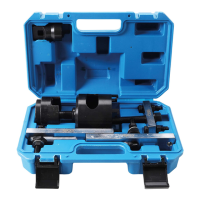BGS technic KG
Bandwirkerstr. 3
D-42929 Wermelskirchen
Tel.: 02196 720480
Fax.: 02196 7204820
mail@bgs-technic.de
www.bgstechnic.com
© BGS technic KG, Copying and further use not allowed
Second measurement for (K1)
Measure the distance from the ruler down to the slip gauge.
Make this measurement as precisely as possible by taking
readings from two opposite positions.
Thus, the determined value will be more precise, and any
inaccuracy caused by a „tilting“ on the engaging bearing will
be minimized.
Take the mean value of both measurements on the slip
gauge. Note down the value as (A).
Example: A= 64 mm
Calculate the difference of the 2 values
A - B = ?
In our example the calculation is as follows:
64.0 mm – 62.3 mm = 1.7 mm
Refer to the below table for the required thickness of the dial.
Your reading for bearing K1
In our example we need a 1.6 mm thick dial.
Never use more than a single dial. Never place 2 dials on top of each other to reach the required
thickness.
Following this procedure, the position of the bearing K1 will be adjusted.
Remove again the bigger starting lever for the subsequent
(K2) measurement.

